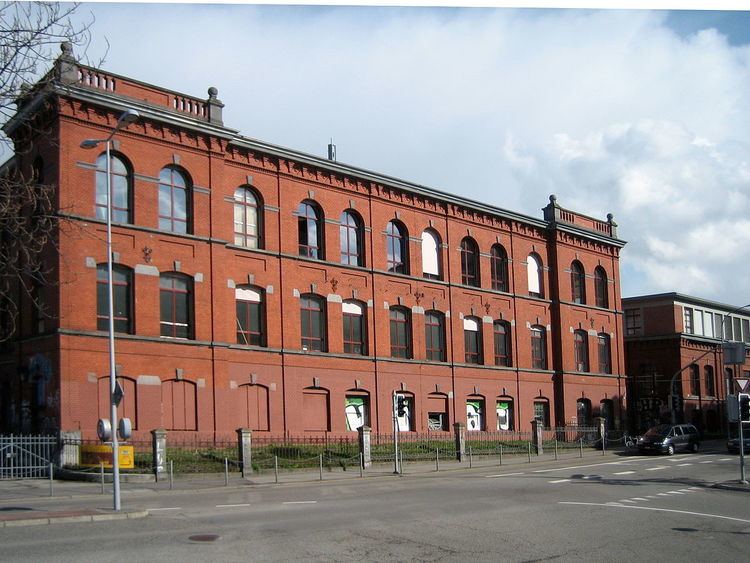Phone +41 44 485 58 58 | ||
 | ||
Address Seestrasse 395, 8038 Zürich, Switzerland Similar Wollishofen, Volkshaus, Schauspielhaus Zürich, Zürich Opera House, Kaufleuten | ||
Rote fabrik neuland 01 01 2017
Rote Fabrik (Red Factory) is a former factory in Zurich-Wollishofen that is now used as a music venue and cultural centre. It is so named because the buildings are made of red brick, but also because left-wing parties were part of the campaign to turn the location into a cultural centre.
Contents
- Rote fabrik neuland 01 01 2017
- Streetparade afterhour rote fabrik 03 08 2014 1600
- The factory
- The Cultural Centre
- References
Streetparade afterhour rote fabrik 03 08 2014 1600
The factory
The Rote Fabrik was built in 1892 for the Seidenfirma Henneberg company, to a design by the architect Carl Arnold Séquin-Bronner. In 1899, the Henneberg company was taken over by the Stünzi Söhne Seidenwebereien company, based in Horgen. In 1940, the factory was taken over by the ITT Corporation. In 1972, the city acquired the factory and planned to demolish the building in order to widen the adjacent Seestrasse.
The Cultural Centre
In 1974 the Social Democratic Party of Switzerland (SP) launched a proposal to transform the factory building into a cultural centre. As a result, studios have been set up for artists and cultural events were held. In 1977, voters chose for the preservation and use as a cultural centre.
A three-day celebration of the Zürich Opernhaus and the opening of a festival was celebrated on 30 May 1980. Unbidden at the door, about 200 protesters demand an autonomous youth centre. The communal Stadtpolizei Zürich and state Kantonspolizei Zürich police corps were informed before and stationed in the foyer of the opera house. As the young people occupy the stairs, the demonstration transformed into a street battle between the demonstrators and the policemen, equipped even with water cannons, tear gas and rubber bullets. A public votation also contributed the riots, as the city of Zurich planned to grant CHF 61 million to the opera house of the rich Zürich people for a renovation and an extension of the building, but nothing to the planned Rote Fabrik in Zürich-Wollishofen, on the other side of the Zürichsee lake shore. The further, for that time extremely high subventions, but lacking of alternative governmental cultural programs for the youth in Zürich, occurred on 30 May 1980 to the so-called Opernhauskrawalle at the present Sechseläutenplatz square in Zürich. A first political compromise was the so-called AJZ, a shorttime youth centre at the Zürich main station. The most prominent politician involved was Emilie Lieberherr, then member of the city's executive (Stadtrat) authorities.
On 25 October 1980, the cultural centre Rote Fabrik opened. Music and theater were the focus of activities. Some independent theater groups, which gained increasing influence in the scene gave their debut at the Rote Fabrik. A referendum in 1987 decided that the Rote Fabrik should be used as an alternative cultural centre and also subsidised.
In the early 1990s, the area was redeveloped. In 2002, the subsidies were adjusted to 2.3 million francs. With this money it became possible to organise more than 300 events annually.
Since 2008 Dock18 is located at the location as well. Dock18 is a space for the new media culture.
A restaurant, Ziegel oh Lac, is located in the rear of the building.
2010 was the 30th anniversary celebration. The Rote Fabrik will continue to run as a collective.
